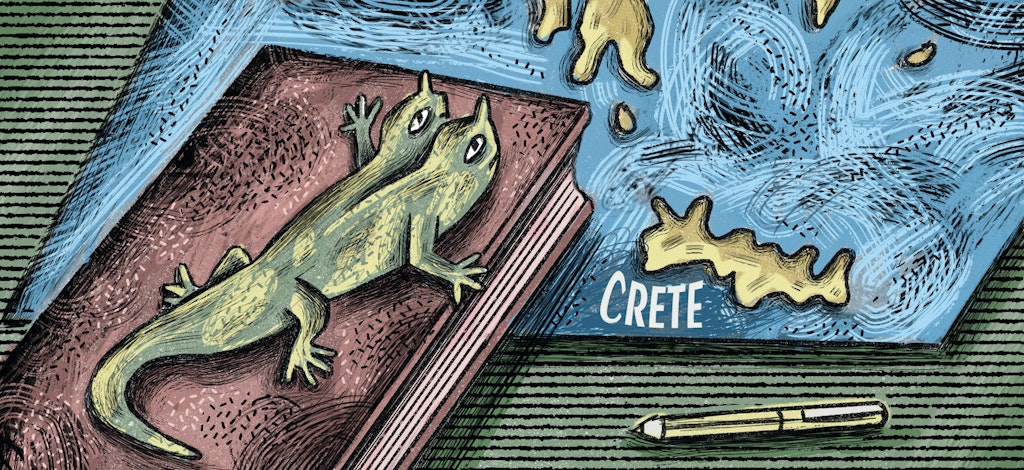Saints and sinners
The dotty suggestion the Queen be canonised is an expression of a hope she will not be forgotten
This article is taken from the November 2022 issue of The Critic. To get the full magazine why not subscribe? Right now we’re offering five issues for just £10.
Saint Augustin is one of the finest monuments of Second Empire Paris, a Haussmannien landmark designed by Victor Baltard — the author, too, of Les Halles, long ago destroyed by municipal vandalism.
The church squats on Boulevard Malesherbes north of la Madeleine. It is part neo-Romanesque, part neo-Byzantine, part paleo-Christian, wholly misshapen, wholly pompier. Its aggression is exhilarating, its sullen misproportions almost frightening. Its many elements do not form a synthesis. A collision is perhaps nearer the mark.
Its interior is sumptuous, gaudy going on bling. The priests might be expected to wear chunky jewellery but of course they have the props of their job. It is the church of a wealthy area. Former hotels particuliers turned into private banks and embassies line the streets. Those named after painters (Ruysdael, Rembrandt, Murillo) are particularly ostentatious.
It is perhaps an unlikely church in which to find a part of the transept devoted to the memory of Charles de Foucauld. The biography is not unfamiliar: cashiered soldier, prodigal aristocratic libertine turned hermit, worker priest, proselytiser for ecumenical angelism and, eventually, in 1916 murdered by people whose gamut of superstitions were not his. He was a victim of tribal or gang or sectarian warfare in the Hoggar mountains of southern Algeria, as troubled then as it is today.
Saint Augustin is the church he had wandered into at the age of 28, confessed, received the eucharist and resolved to live life in imitation of Christ, his piety expressed sartorially and in an expression of humility that may have been practised.
In May this year he received his posthumous reward. He was canonised. The qualifications for canonisation are to be dead for at least five years, to have led an exemplary Christian life, to have performed at least two miracles.
The Vatican decides what is and what isn’t a miracle. Foucauld’s miracles were to cure a Milanese woman of cancer in 1984 and to save the life of a Saumur carpenter who fell 50 feet whilst working on the restoration of a school chapel a couple of years ago. Both incidents confounded medical opinion: of course they did. It was intercession by prayer to Foucauld that was deemed to have effected the cure in both instances.
The other successful contestants in May were founders of various orders: Little Sisters of the Holy Family, Sisters of the Poor, Little House of Divine Providence, the Capuchin Sisters of Vocationist Fathers etc. There was also a man who died murmuring the name of Christ. It’s clear that sainthood cannot and will not be meted out to persons other than Catholics, no matter how good their works.
This is one problem, as he himself acknowledges, with Milord Moore’s charmingly dotty proposal that the late Queen, evidently Protestant, should be canonised. She will soon have been dead for five years. That she led the life of an exemplary Christian billionairess is not in doubt. That’s two boxes ticked.
So far, so droll. Then Milord goes on to admit that proving the two obligatory miracles “can take time, but the world is already full of people who believed that the late Queen cured them of this or that. As her cult grows plenty of posthumous examples will come forward.”
This is wacky stuff. Is it some sort of Etonian facetiae: where is the vanguard of the posthumous examples? Or is it simply wishfulness? A hope that the memory of Her Majesty will not be lost in a fog of forgetfulness — during her long reign attention spans diminished terribly.
Canonisation is the ultimate Lifetime Achievement Award
Canonisation is the ultimate Lifetime Achievement Award even if the recipient is not available to gag and choke on tears whilst thanking the many preceding generations, gofers, wonderful, wonderful co-stars etc. Milord’s motive for his proposal is founded in loyalty, a property whose probity depends on what it qualifies but which often signals nothing more than opportunism. In this instance, Milord has commendably nothing to gain but a mild ribbing.
His amply rewarded loyalty to The Prime Shit Emeritus is a different matter. The Vicar of Bray and “The Gimpy Devil” Talleyrand are the dishonorable role- supermodels in this arena, fine examples to any young swine that has ambitions of high office.
From abomination to gut feeling: Meine Ehre heißt Treue was the motto of the SS. My honour is called loyalty. Until, that is, the loyalist was subjected to de-Nazification where he or she pleads coercion and ignorance.
The rapturous chorus on the Kop sings from its viscera. This is the greatest properly religious spectacle in Britain today. Its loyalty stands for nothing but itself. It shouts, but not about its own virtue.
And it admires, worships and deifies athletes in red who are actual beings — alive and vital, muscle and sweat — rather than a tired figment of the clichéd imagination who may or may not live in rushing rills, sloughed bark, paws, bismuth, hoodoos, albizia pods, lightning bolts and clouds supposedly shaped like the late Queen riding side-saddle.
Enjoying The Critic online? It's even better in print
Try five issues of Britain’s newest magazine for £10
Subscribe














